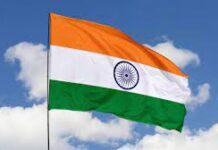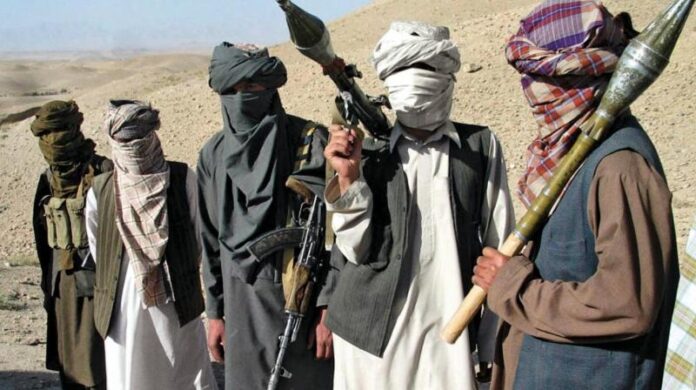A Letter from Prometheus
What happened in Bannu CTD Centre has reaffirmed the skills and firepower of the Tehreek-e-Taliban Pakistan (TTP) that kept engaging Pakistani security forces for over 48 hours fighting inside the building. This incident reminds us of what happened in GHQ Rawalpindi on 10–11 October 2009. Operation Janbaz cleared the building but left a sense that nothing is secure in Pakistan. Since then the Pakistan Army had been trying to establish a sense of security among citizens and the TTP has been engaging Pakistan in an unending fight that is still going on.
Operation Zarb e Azb and Operation Raddul Fasad tried to defeat terrorism but it has never been defeated and the multi-headed serpent of terrorism is still alive. I fear that it will remain alive till Pakistan will keep engaging itself in Afghan issues and keep feeding Afghans.
I served in Afghanistan as a journalist during 1995-97 and then covered the so-called War On Terror from 2001 to 2006. This field assignment helped me to understand the currents and undercurrents of the Afghan war and the Afghan mindset. I believe the TTP could not be formed and could not be in the swing if it did not have support from the Afghan Taliban but the majority of writers had been claiming and blaming TTP as just an Indian product. Yes, it got financial as well as technical support from Indian intelligence agencies but its survival within Afghanistan was within the active support and cordial relations with the Afghan Taliban. TTP foot soldiers had been helping the Afghan Taliban to defeat the Afghan Army in the past.
The Afghan problem is exceptionally complex; having multiple dimensions since 1979 and having been compromising the security of Pakistan. Some people claim the Afghan war is a big business for many in Pakistan and they cite allegations of selling Stinger missiles and the Ojhri Camp blast of April 1988,the known involvement of powerful groups in the drug and weapon business, the benefits of the Afghan Transit Trade and the Commissionerate of Afghan Refugees for those who had always been in power in Pakistan. These above-mentioned factors since 1979 are diamond mines for those who understand why Afghanistan is important for Pakistan.
The killing of Ayman al-Zawahiri in Kabul in a US strike was enough to learn that the Afghan Taliban are still supporting terrorist outfits directly or indirectly or they are so weak that they cannot stop or purge terrorists using Afghan soil. We know the TTP leadership, including Mullah Fazlullah, had been living in Kunar province of Afghanistan with the perceivable support of the Afghan Taliban even before they captured Kabul. Everybody knows that Mullah Fazlullah was one of the biggest enemies of the Pakistan Army in the region but he had been living a comfortable life in the Kunar province and had been using Afghanistan as a launching pad for attacking Pakistan. There is no doubt and circumstantial evidence that the Indian intelligence agency RAW invested in forming TTP that had safe havens under Afghan Taliban-controlled areas. This situation could be considered as a linkage between the Afghan Taliban and the Indian network, but it had never come under discussion in Pakistan.
In one of my articles, “A year after the fall of Kabul” published in this newspaper on August 7, I categorically mentioned that the TTP problem had not been solved and negotiations with TTP would ultimately enhance the confidence of terrorists who were virtually destroyed by the Pakistan Army when Ashraf Ghani was in power in Kabul. Afghan Taliban are cutting the iron fence Pakistan installed during Ashraf Ghani’s tenure at the Pak-Afghan border and which was intact till the Afghan Taliban did not come into power. I believe soon we will find parts of this iron fence in some iron melting plants in Pakistan.
Do we remember that today’s Afghan Taliban are the second and third generations of the “Mujahedeen” who were crafted to destroy the regular army of Soviet Afghanistan? Mujahedeen smashed the Afghan government under “Operation Cyclone” and their second and third generations won the war against US-led 55-plus countries.
All stakeholders, particularly those who had been crying and protesting that “TTP is back” should be taken into confidence by the state and the political leadership must debate in the Parliament who started negotiations with TTP and on what conditions this new phase of dialogue was initiated.
The USA launched the Afghan Jihad in the late 1970s against the former USSR. This Jihad, having the code name of “Operation Cyclone”, was directly or indirectly manned by the military establishment of Pakistan. Pakistan effectively worked along with the CIA in changing the region as well as changing the mindset of the moderate Afghan and Pakistani societies. Whatever we are facing today is the bitter fruit of this tree we planted in the 1970s. TTP is nothing but a form of the Mujahedeen of the 1970s and the Afghan Taliban of the 1990s, having the same philosophy and quest of destroying an established state and its army; the only difference is that the target is Pakistan and the Pakistan Army instead of Afghanistan and its former Soviet state.
We were told by the state institutions that the Red Army of the former USSR ran away from Afghanistan by leaving a huge cache of arms worth billions of dollars behind the Amu Darya. However, things were otherwise. Background talks with former military men of the former USSR suggest that the decaying Communist era decided in principle to leave almost all weapons within Afghanistan and ordered its soldiers just to carry one gun and vehicles to take them out from the land of blood and destruction— Afghanistan.
Therefore, the Red Army by design left thousands of T-52 tanks, Mi-22 light helicopters, BM-21 Grad (moveable rocket launching pads), assault rifles like the AK-47, and millions of live bullets and RPGs behind in Afghanistan. Some former Soviet military officers claim that the decision was taken in the Politburo to leave weapons in Afghanistan so Afghans would have toys (weapons) to play with for the next three to four decades and keep destroying not only their own country, but Pakistan also, which had played a pivotal role in defeating the Red Army.
Former generals of the Red Soviet Army claim that the Soviet Union had a firm belief that radical extremists equipped with Soviet-made AK-47s would change the social fabric of Pakistan right after the departure of the Red Army because Afghans would start selling their weapons to private hands in Pakistan. However, the Soviet Army thought that the Pakistan Army could buy rocket launchers, BM-21 Grad, MI22, and tanks from Afghan Mujahideen, but this never happened and Pakistan Army never thought about this.
What has happened, has happened and we must move forward because there is no reverse gear in history. What we can do to safeguard our interests is the most important concern for people like me who have been covering Afghan issues for half of their lives.
I believe that all stakeholders, particularly those who had been crying and protesting that “TTP is back” should be taken into confidence by the state and the political leadership must debate in the Parliament who started negotiations with TTP and on what conditions this new phase of dialogue was initiated.
The state has never taken the public into confidence over the Afghan issue in the last 43 years but I believe we must do it now.























